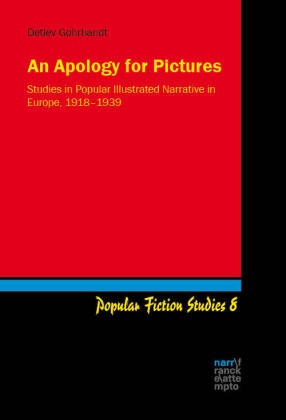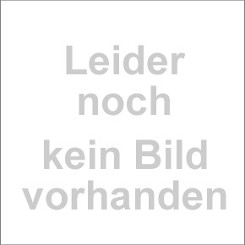
An Apology for Pictures - Studies in Popular Illustrated Narrative in Europe, 1918-1939
| Verlag | Narr |
| Auflage | 2024 |
| Seiten | 465 |
| Format | 15,0 x 3,2 x 22,0 cm |
| Großformatiges Paperback. Klappenbroschur | |
| Gewicht | 727 g |
| Artikeltyp | Englisches Buch |
| Reihe | Popular Fiction Studies 8 |
| ISBN-10 | 382338564X |
| EAN | 9783823385646 |
| Bestell-Nr | 82338564A |
Wozu brauchen Texte Illustrationen? Das ist die Grundfrage, von der diese vergleichende Untersuchung von populären illustrierten Erzähltexten aus Frankreich, Deutschland und Großbritannien in der Zeit zwischen den Weltkriegen ausgeht. Wie helfen Bilder den Leser:innen einen Text zu verstehen, und wie ist es umgekehrt? Was muss man über ein Bild wissen, um seine Striche und Flächen zu lesen? Verschiedene Bildarten werden vorgestellt, im Detail analysiert und auf ,ihre' Texte bezogen. Es zeigt sich, dass wir beim Lesen von Wörtern immer auch Bilder, Farben usw. aus unserem Gedächtnis abrufen und beim Betrachten von Bildern sprachlich aktiv werden.
Inhaltsverzeichnis:
Introduction: The importance of popular illustrated narrative1.1 How this study was born and grew up1.2 Adjunctive relations between verbal and visual artefacts1.3 Models for the cultural study of the illustrated book2 Invention, decline and reform in the history of book illustration, 1850-19322.1 Techniques and economics of book illustration2.2 Art and ethics of the illustrated book in England2.3 Components of the book reform movement in Germany2.4 Book reform in France from Bracquemond to Pelletan 3 Popular illustrated fiction from 1918 to 1939 - some major series3.1 The many meanings of "popular"3.2 Popular illustrated fiction series in France3.2.1 Arthème Fayard's Le Livre de Demain (1923-47)3.2.2 Joseph Ferenczi & Fils: Le Livre Moderne Illustré3.2.3 The Grand Prix Gustave Doré and the rules of illustration3.2.4 The Librairie Hachette and Les Grands Écrivains3.3 German illustrated book series: 3.3.1 Illustrated fiction in the Insel-Bücherei3.3.2 Samuel Fischer: Fischers Illus trierte Bücher3.3.3 Kurt Wolff: Die Schwarzen Bücher and other series3.4 Illustrated fiction series in Britain3.4.1 John Lane The Bodley Head3.4.2 Chatto & Windus and the Phoenix Library3.4.3 Penguin and the Illustrated Classics4 The semiotics and rhetoric of illustrated fiction4.1 Kinds of ornament and illustration4.2 Frans Masereel and the architecture of the illustrated book4.3 Verbal and visual signs in The Patriot's Progress5 Case studies in writers and illustrators5.1 Five illustrated versions of Flaubert's "Un Coeur simple" (Trois Contes) illustrated by Albert Hoppler (1918), Robert Diaz de Soria (1923), Félix Vallotton (1924) and Georges Le Meilleur (1927)5.2 Illustrating an argument: Bernard Shaw and John Farleigh5.3 Robert Budzinski - artist and writer in a disrupted world6 Afterword: Some conclusions and an outlookAppendices
For many children whose Grandma or Dad spent hours reading to them from illustrated books, these hours have opened the gateway to reading for themselves. Once the children's curiosity is aroused, talking with them about the stories and their illustrations will lead them to look for themselves, to ask questions, decipher speech bubbles and captions, and soon find themselves on the road to reading. Adult readers, who are often not practised readers themselves, will benefit from the illustrations in much the same way, by helping them to visualise characters and settings. In the period between the two world wars, many people in France, Germany and Britain were grateful for the illustrated novels published in inexpensive but nonetheless quality series, and even became collectors. The comparative study of these books reveals much about how texts and pictures interact, and at the same time shows up cultural developments and differences.

